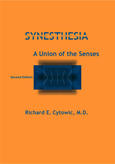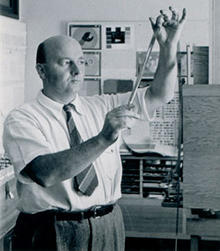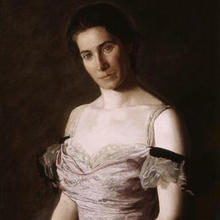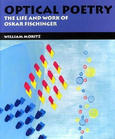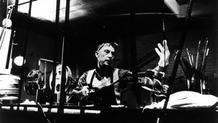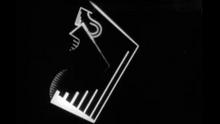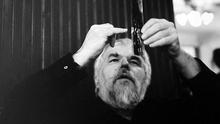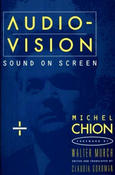Farbe-Licht-Musik
(2005)– Synästhesie und Farblichtmusik by Jörg Jewanski and Natalia Sidler focuses on the research on the color-light-music of Alexander Lászlo who in 1925 achieved overwhelming success with his multimedeia show.
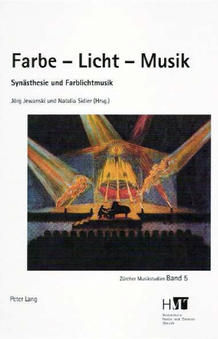
This study focuses on the research on the color-light-music of Alexander Lászlo who in 1925 achieved overwhelming success with his multimedia show. A short time after his new art form fell into oblivion. The autors of this work revived and developed the experiments of Lászlo: his music has been rediscovered and coupled with actual visuals. Today’s artists have reflected on Lászlo's Sonatina for piano and Color-light in a creative way. Synesthetes who automatically perceive musical colors and forms, have presented their personal images of his music.
Natalia Sidler’s Color-Light-Piano was especially constructed eight years ago, and this book examines the experience gained from this instrument during the past eight years an re-evaluates the relationship between color, light and music.
(Text editor and translation: M. Saliba)
Source: Natalia Sidler
Beginning in 1925, László performed Farblichtmusik concerts with his color-light piano, colored spotlights, and four slide projectors, with music varying from his own compositions to Chopin, Rachmaninoff and Scriabin. Dr. Jörg Jewanski writes:
"After this, László became very popular in Germany. He had conceived the idea of combining music and painting in a way that would subordinate neither art to the other. To this end, he began collaborating with the German painter Matthias Holl. Acting on László's ideas, Holl painted watercolor pictures, which were transferred onto slides."
In 1926 László collaborated with Oskar Fischinger, who provided reels of abstract film imagery, screened on multiple projectors at the Farblichtmusik performances. This became the first public multimedia event using abstract cinema, combining Fischinger's films with László light projections, music and painted slides:
"In March 1926, there was a collaboration between Fischinger and László at one concert in Munich, where a film of Fischinger was used… Fischinger and László both were satisfied with this experiment, and in April 1926 they signed a contract. László was to pay 3 Deutsche Mark for every meter of Fischinger's film he used in his Farblichtmusik-concerts."
Fischinger, in a June 1926 letter to the director of the Munich City Theatre, refers to László's Farblichtmusik performance there on March 7. He stated the performance was visually dependent on his film work, and offered the director a special show, Fieber I, II and III, which he planned with music by Korngold, to be performed independent of László (though he would need László's approval). Fischinger confirmed he would provide and assemble the projection apparatus.
("Space Light Art - Early Abstract Cinema and Multimedia, 1900-1959" by Cindy Keefer)
Source: Center for Visual Music
ISBN-10: 3039106368
ISBN-13: 978-3039106363

